Scientific focus
The institute is traditionally organized into three basic scientific directions studying the formation and development of igneous rocks, metamorphic processes in the rocks of the Earth's crust and mantle, and record of deformation during their formation and transport to the Earth's surface. Because these processes take place along the convergent and divergent interfaces of lithospheric blocks and often lead to large-scale collisional orogens across continents, our research takes us to different regions of the world. In recent years, in addition to Europe, our staff and students have worked in Central Africa, the Middle and Far East, Central Asia, North America, Antarctica and Oceania. Our research teams focus on crystalline rocks of the Earth's crust, magma formation and metamorphic reactions between minerals that take place under extreme temperature and pressure conditions in the mantle or at the boundary of the mantle and earth's crust along subduction or rift zones. In addition to the development of orogens and models of how they are formed, our research involves the behavior of elements in minerals, including trace elements and isotopes, during changing conditions of temperature and pressure. The diffusion of elements within the crystal lattice of minerals and microscale deformations are also studied. Our institute has had great success in obtaining grants from the Czech Science Foundation and international foundations for Earth and space science.
For their research activities, students and staff of the institute use modern laboratory equipment including optical polarizing microscopes and a microscope to analyze grid orientation. State-of-the-art equipment also includes a Jeol electron microanalyzer (EPMA) with a Schottky cathode as the electron source and a TESCAN Vega scanning electron microscope with BSE, SE and CL detectors installed. The Institute of Petrology and Structural Geology also has an experimental laboratory to study the formation and behavior of magma and its crystallization under various temperature and pressure conditions. The results of this research also have wide applications in material production.
Other institute activity
The institute staff play a major role in teaching undergraduate and master’s students, including the ERASMUS program, where we offer a great number of courses in English. In addition to master’s study, the institute is also the guarantor of doctoral studies in Petrology and Structural Geology, which is also an attractive field for graduates of foreign universities, who currently make up nearly half of our post-graduate students.
Major successes
Over recent years, our researchers have made significant advances in understanding the geodynamic development of orogenic zones, which includes a wide range of magmatic processes, metamorphic events and deformation processes. The current geodynamic concept of hot orogenic domain development formulated on the example of the Bohemian Massif is gradually becoming the standard for studying and reconstructing development in a number of orogenic zones around the world. This concept involves several developmental stages in time and space: 1) deep subduction of the Earth's crust and mantle to conditions of a diamond stability field, 2) breaking of the lithosphere plate and decompression melting of the mantle leading to partial exhumation of high-pressure rocks and heating to extremely high temperatures in the orogenic wedge , 3) relamination of the overlying plate-based material and formation of a felsic lower crust in the orogenic root and 4) specific mass and heat exchange between the middle and lower crust resulting in vertical extrusion of the orogenic lower crust. The proposed concept is unique and innovative by presuming an important contribution of volumetric forces in the thickened part of the crust, which at some point of hot orogen development outweigh the convergent forces of plate tectonics and can cause horizontal redistribution of the orogenic infrastructure along with lateral shortening. In contrast to conventional tectonics, this concept explains the emergence of younger structures below older ones during progressive convergence and the interaction of the contrasting structural and metamorphic record between the shallow and deep parts of the orogen.
Members of our institute cooperate with researchers here and abroad and traditionally organize international conferences or are invited to lecture at conferences and universities. Our staff often receives awards from students for outstanding teaching. At the same time, our students are regularly recognized by the Dean of the Faculty of Science for their professional work. The graduates of our institute are well received at foreign universities, where they obtain doctoral and post-doctoral positions. The high level of research and reputation of our Institute is evidenced by the fact that our graduates currently hold professorships at several European universities.
History of the Institute
The foundations leading to the Institute of Petrography at the Charles University Faculty of Science were laid from 1869-1881 by Emanuel Bořický, founder of Czech petrography and geochemistry and world renowned petrograph in his time. The official founding of the Institute of Petrography took place under Prof. Josef Kratochvíl (1920-1951). Significant progress in the study of igneous and metamorphic rocks at the Department was made under Prof. Bohuslav Hejtman from 1954-1975. After 1975, teaching and research on sedimentary rocks was added to these disciplines and the Institute of Petrography was transformed into the Department of Petrology. The Institute of Petrology and Structural Geology assumed its current form in the early 1990s under the leadership of Prof. Karel Schulmann. Advances in petrology were made and structural geology later added due to the efforts of a number of scholars who were or are known abroad, for example, Prof. Jiří Konta (1945-1991), long-time member of the editorial board of Clay Minerals journal, Assoc. Prof. František Holub (1949-2016), who specialized in the ultra-potassium rocks of the Bohemian Massif and Prof. Karel Schulmann (1991-2004), who was instrumental in changing our understanding of the geodynamic development of the Bohemian Massif.





















